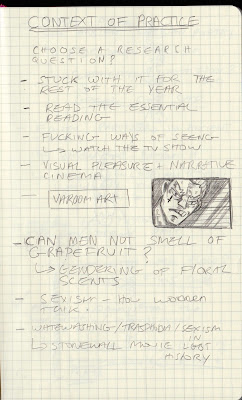Vladimir Nabokov's novel Lolita is a literary classic,
published in 1955, and since then it has gone through many covers throughout
the years, yet a common theme with a lot of these covers is that they on a
whole defy Vladimir Nabokov's original intentions for the book cover, having
said
“I want pure colors, melting clouds, accurately drawn details, a sunburst
above a receding road with the light reflected in furrows and ruts, after
rain,” he wrote. “And no girls.”
With this it's
easy to see how this relates to the Death of the Author theory. Vladimir Nabokov' specifically did not want girls on the
cover of his book, yet it is the reader interpreting his work which created the
number one image associated with the book. These covers have also shaped the way
the book is perceived, most thinking it to be an erotic novel, when it's
actually more a study into the mind of a male character whose dark and
disturbing thoughts project onto a child. Instead we think of images of a
teenage seductress. This can mostly be attributed to 1997 movie, where the main
character age was changed from 12, to 16, a massive leap, which renders the original
narrative of a sexually abused child to that of a rebellious young teenager,
soon to be women. After that Lolita photographs of half naked or fully naked
women seductively posing for the viewer, plagued covers.
Nabokov was outraged at: “Humbert was fond of ‘little girls’ — not simply
‘young girls.’ Nymphets are girl-children, not starlets and ‘sex kittens.’” and
yet we still take the cover artists interpretations. Here the intent of the
author is explicitly ignored.
The cover
above is by Per Ahlin above is a one of numerous Loita covers, which shows how
artists dismiss Nabokov's original intentions.
The character on the cover looks to be a young woman, not the 12-year-old girl within
the book. She had big model like hair and is wearing lingerie, which is
highlighted by the orange spot colour chosen by the artist, her eyes seductively
half lidded. This is exactly the type of cover Vladimir
Nabokov did not want and thus the interpretation of his text Nabokov did not
want.
However, in Roland
Barthes "Death of the Author" text, he speaks of how in the modern
era the origin of a work may lie with the author, but its destination is with the
reader, everything comes down to the readers perception in the end. Here we
have two readers, the cover book artists and the viewer who read the book with
the artwork on the front, and see them as irrevocably linked. Barthes wrote "Once
the Author is removed, the claim to decipher a text becomes quite futile. To
give a text an Author is to impose a limit on that text, to furnish it with a
final signified, to close the writing." Via Death of the Author, what
is to say these erotic interpretations of Lolita are not valid? However, it
becomes interesting because these erotic interpretations undeniably show the
gaping flaws within our society around the sexualisation of young girls, and
the abuse of young girls, and the way men feel they have ownership over them,
the themes Vladimir Nabokov was originally
trying to write about. Having Lolita's meanings and interpretations decided by
the readers and artists via death of the author undeniable hold a mirror up to
our society and it's problems. Has Vladimir Nabokov's original intentions been
realised, even though they are not the way he intended.
 |
Ellen Lupton Cover; a non sexualised cover
|















